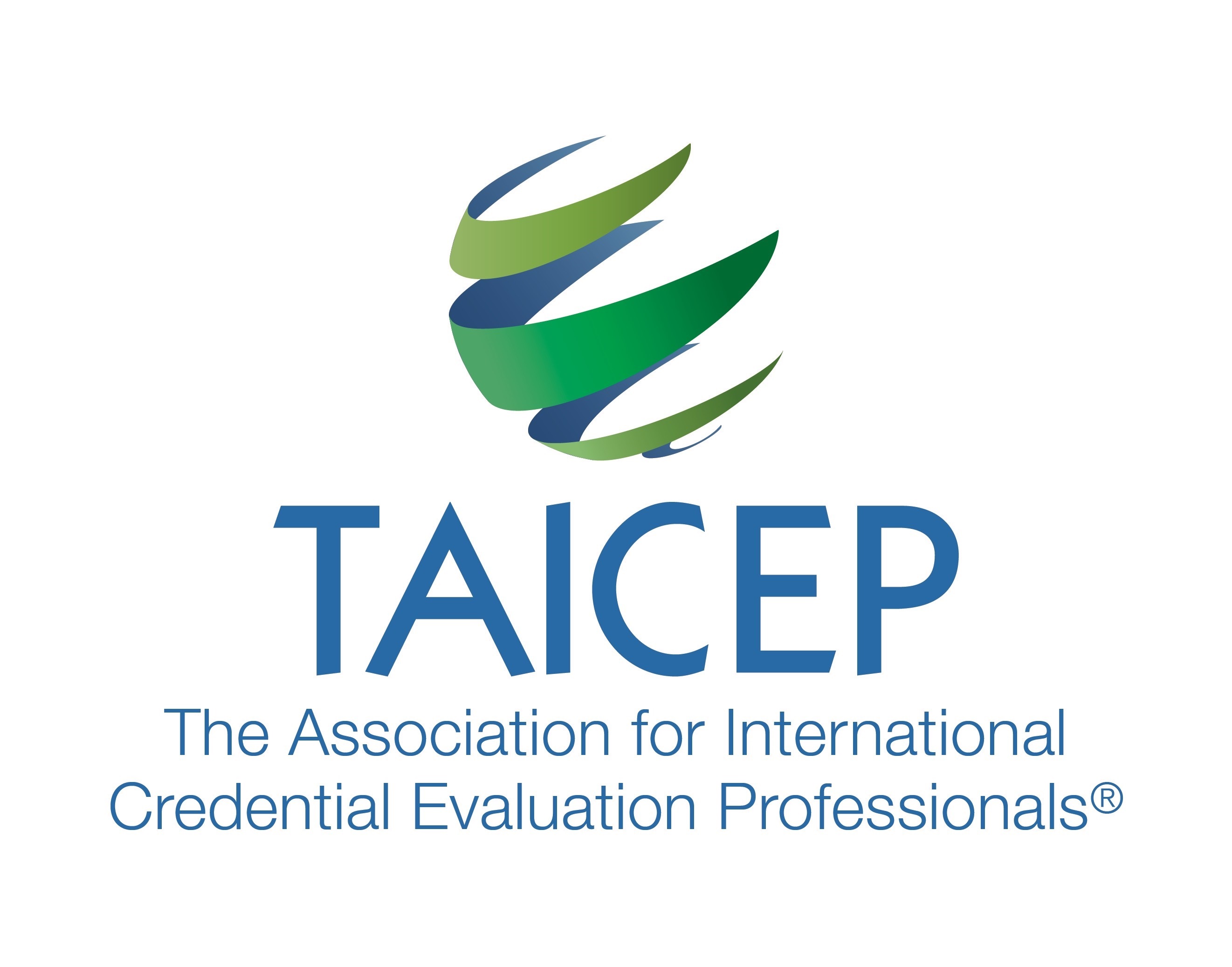Written by: Christopher Adams, Indiana University, LesLee Clauson Eicher, AACRAO International, Erik Kyhlberg, Swedish Council for Higher Education, and Rolf Lofstad, Norwegian Agency for Quality Assurance in Education
Education in Europe is currently undergoing many changes. Scandinavia has often been at the forefront of these changes. At the 2017 TAIEP conference in Rome, a panel of international credential evaluators came together to introduce the various types of secondary-school curricula and leaving-certificates (academic, vocational, and the varied streams within each) currently available to students in Denmark, Norway and Sweden. The panel focused on updates and changes to the systems, as evidenced in credentials, curricula, and grading scales. Participants were shown sample documents and learned about available resources. This is a summary of that discussion.
Denmark
Primary and Lower Secondary Education
Danish schoolchildren attend Folkeskole (“Folk” School – Elementary and Lower Secondary School), a free, public school system with a comprehensive (un-streamed) curriculum. Compulsory education lasts 10 years, with one year of pre-school, plus grades one through nine, typically ages six through sixteen. An optional grade ten also exists in the Folkeskole. Student who successfully complete the Folkeskole curriculum receive the Afgangsbevis (School-leaving examination certificate)
Upper Secondary School System – Legislation, Financing, and Management
The Ministry of Education sets the regulatory framework by which all schools are structured. Schools throughout Denmark are self-governing institutions (within the federal framework) that offer one or more of the upper secondary education programmes by means of grants from the Ministry of Education. These size of these grants vary based on student numbers. The head of the school answers to a board, the composition of which reflects the school’s specific profile. The teachers and students of the school appoint representatives to the board. The school board appoints and dismisses the head teacher and has overall responsibility for the running of the school and its activities. You can see here for further information.
Upper Secondary Education – General Information
Curricula and exams at each type of upper secondary school must follow national standards. The curricula of the HHX and HTX differ from those of the STX and the HF. In addition to some general upper secondary subjects, the HHX offers financial and business subjects, while the HTX offers technical subjects. Admission requirements for the STX, HHX, and HTX are the Folkeskole Afgangsbevis, plus certain subject requirements. The HF requires ten years of basic school. This type of schooling attracts both young people and adults.
Upper Secondary Education – Types
There are four types of upper secondary school leaving examinations in Denmark:
The 3-year Studentereksamen (STX) (Upper Secondary School Leaving Examination) is awarded after successful completion of study at a Gymnasium (Academic Upper Secondary School). The STX leads to higher education. It must include at least four subjects at A-level and normally three B-level and seven C-level subjects.
- Compulsory subjects and levels: Danish A, English B, 2nd foreign language B or A, history A, classical studies C, physics C, physical education (PE) C, an artistic subject C, mathematics C, religion C, social science, and in addition at least two of the subjects biology, chemistry and natural geography at C-level.
- Most students must also complete biology, physics, chemistry or natural geography at B-level.
The curriculum for this credential requires a minimum of 2,470 60-minute lessons.
The 2-year Højere Forberedelseseksamen (HF) (Higher Preparatory Examination) is awarded by a Gymnasium or adult education center. It also leads to higher education.
- It requires Danish A, English B, mathematics C, physical education C, practical/musical subject C, natural science group of subjects (which includes biology C, geography C and chemistry C), and the culture and social science group of subjects (history B, social science C and religion C).
The curriculum for this credential requires a minimum of 1,625 60-minute lessons.
The 3-year Højere Handelseksamen (HHX) (Higher Commercial Examination) can be obtained by successfully completing the curriculum of a Handelsskole (Business School/College). This credential leads to higher education, with compulsory subjects
- Danish A, English A, 2nd foreign language B or A, business economics B, marketing B, international economics B, contemporary history B, mathematics C, commercial law C and social science C.
- There is also an intensive one-year HHX program for students who have already completed an STX or HF program.
The curriculum for this credential requires a minimum of 2,470 60-minute lessons.
The 3-year Højere Teknisk Eksamen (HTX) (Higher Technical Examination) is awarded upon completion of the curriculum at a Teknisk Skole (Technical School/College). It leads to higher education. Students must complete
- Danish A, technical science A, English B, physics B, chemistry B, mathematics B, technology B, biology C, communication/IT C, social science C and history of technology C.
The curriculum for this credential requires a minimum of 2,630 60-minute lessons.
Vocational Education
Denmark also boasts a robust vocational education track. The following credentials may be earned:
EGU (Erhvervsgrunduddannelsen) – Vocational Basic Training
The EGU is “sandwich training” targeted at young adults who did not complete compulsory education, are unemployed, and/or are academically weak. It alternates between school-based periods and periods of practical training in one or more companies. It typically lasts two years. There is no formal qualification awarded upon completion.
VET (Erhvervsuddannelser) – Initial Vocational Education and Training
The VET program is “sandwich training” targeted at school-leavers and adults with prior vocational experience. It is typically two to five-and-a-half years in duration, with the most typical being three-and-one-half to four years. Trainees are awarded a journeyman’s certificate (Svendebrev) or similar. Some programs qualify trainees for admission to certain types of short-cycle higher education programs.
EUX (Erhvervsuddannelse og gymnasial eksamen) – Vocational Education and Training + General Secondary Examination
This program was introduced beginning with the 2010/2011 school year. It is a general upper secondary education (STX) program which VET students can attend while completing their VET program. Not all VET programs will offer this option. The EUX leads to higher education.
Grading
Note that the old system was in use through August of 2007; the new system came into effect as of September 2007.
| Current
7-point scale |
Old 13- point scale |
| 12 | 13, 11 |
| 10 | 10 |
| 7 | 9, 8 |
| 4 | 7 |
| 02 | 6 |
| 00 | 5, 03 |
| -3 | 00 |
Norway
Primary and Secondary Education Regulation
Regulation of primary and secondary education in Norway is governed by the Education Act, which was originally passed in 1998 and has been amended five times, in 2010, 2011, 2012, 2013, and 2014. It has been in effect since 2014. It is decided by the parliament, contains the general provisions for all school forms, and covers both compulsory education and upper secondary education.
The curriculum is determined by the Government. It states the tasks, overall goals and the values that should underpin teaching in the upper secondary school. There are both public and private schools in Norway, but all that receive financial support are governed by the same regulations.
Governance of primary and secondary education
The Norwegian Directorate for Education and training has the overall responsibility for supervising kindergarten, education, and the governance of the education sector, as well as the implementation of Acts of Parliament and regulations. The Directorate is responsible for all national statistics concerning kindergarten, primary and secondary education. On the basis of these statistics it initiates, develops, and monitors research and development.
Structure of Primary and Lower Secondary Education
At the primary and lower secondary level, students attend a Grunnskole (Basic School) for grades one through ten, ages six through sixteen. Compulsory education lasts ten years, grades one through ten (typically ages six to sixteen). Prior to 2003, compulsory education was nine years in duration, ages seven through sixteen.
After completing grade ten, Grunnskole students sit for a school-leaving examination; the final certificate is the Vitnemål fra Grunnskolen (Basic School Certificate).
Primary and Secondary Education – Tracks
There are thirteen tracks:
| Five general study programs | Eight vocational programs |
| They give access to higher education. | These usually last two years in school followed by a two-year apprenticeship. |
| They are attended by 60% of the pupils. | Bridging to general study program is possible. |
| 60% of these pupils have parents with higher education. | 62% of these pupils have parents with lower- or upper secondary education |
Documentation
The below tables show vocabulary used on Vitnemål and/or Kompetansebevis from lower- and upper secondary school documentation.
Headings on the Vitnemål and/or Kompetansebevis
| • Navn | • Name |
| • Fødselsnummer | • Personal ID no. |
| • har i åååå bestått | • Has in yyyy passed |
| • har i åååå gjennomgått grunnskoleopplæringen | • Has in yyyy completed his/her compulsory education |
| • har gjennomført opplæring som omfatter | • Has completed education/training in |
| • i utdanningsprogram for | • In the education programme for |
| • fullført | • Completed |
| • bestått | • Passed |
| • og har oppnådd generell studiekompetanse | • And has achieved general university admissions certification |
| • og har bestått fagopplæring | • And has passed vocational training |
| • og har oppnådd yrkeskompetanse | • And has achieved vocational competence |
| • Fortsettelse fra side 1 | • Continued from page 1 |
Headings on the subjects on the Vitnemål and/or Kompetansebevis
| • Omfang | • Hours |
| • Kode | • Code |
| • Fag | • Subject |
| • Standpunktkarakter (Standpunkt-karakter) | • Final assessment grade (Final grade) |
| • Eksamens-karakter (Eksamens-karakter) | • Examination grade (Exam grade) |
| • Eksamensform (Eks. form) | • Examination form (Exam form) |
| • År | • Year |
| • Merknader | • Comments |
| • Fellesfag | • Common core subjects |
| • Felles programfag | • Common programme subjects |
| • Valgfag | • Elective subject |
Grading
| Indigenous scale | Verbal |
| 6 – exceptionally high degree of competence in the subject | seks |
| 5 – very high degree of competence in the subject | fem |
| 4 – high degree of competence in the subject | fire |
| 3 – fair degree of competence in the subject | tre |
| 2 – low degree of competence in the subject | to |
| 1 – very low degree of competence in the subject | en |
Timeline of Educational Reforms: School and Credential Names
Upper Secondary Education
1976
- Schools called Gymnas (Gymnasium – Academic Upper Secondary School)
- Qualification: Examen artium
1976
- Schools called Videregående skole (Upper Secondary School)
- Qualification: Vitnemål fra den videregående skolen (Certificate from Upper Secondary School)
- Grunnkurs (Basic Course) VKI, VKII building on each other; four streams
1985 – 1992
- Qualification: Vitnemål fra den videregående skolen
- Grunnkurs VKI, VKII building on each other; no streams, more freedom in choosing subjects
1994 (Reform 94 [R94])
- Qualification: Vitnemål videregående opplæring (Certificate – Upper Secondary Education) issued from1997 until 2010
- Grunnkurs, VKI, VKII building on each other
- 6 streams + VKII General subjects bridging for vocational streams
2006 Kunnskapsløftet (KL)
- Qualification: Vitnemål for videregående opplæring (Certificate for Upper Secondary Education), issued from 2009
- VG1, VG2 and VG3 replaces Grunnkurs, VK1 and VKII
- Periods of 60 minutes and total number of hours replaces periods of 45 minutes per week
Sweden
Sweden has gone through several educational reforms in the last 25-30 years. The current curriculum, which has been used since 2011, is the fifth major reform since the early 1990’s. This makes Swedish education a difficult topic to summarize.
In the session at TAICEP 2017, we briefly touched upon the regulations that govern Swedish education, grading scales over the years, program formats, and graduation requirements. We also looked at some statistics of secondary school graduates, admissions requirements for university studies in Sweden, and samples of Swedish grade documents.
Education in Sweden is nationally standardized, and generally free for all students at all levels. The overall Education Act, the school curriculum, subject syllabuses, as well as a number of ordinances and regulations, apply to all education regardless whether a school is public or privately owned. In upper secondary school you choose between two types of programs, higher education preparatory or vocational. The Swedish curriculum uses a course and credit system where each subject has a number of courses, in most cases building on the previous course. And, although the current curriculum has meant several changes in the content of subject syllabuses, graduation requirements, course codes/names, and grading scale, this overall principal has remained the same.
Upper secondary school students in Sweden can generally receive two different documents upon graduation. The Diploma Certificate (Slutbetyg) is awarded to students who have met the diploma requirements. If you have studied a higher education preparatory program, this certificate will automatically meet the general entry requirements for undergraduate studies in Sweden. If you have studied a vocational program, your diploma certificate will generally not meet the general entry requirements for university studies, unless you have studied additional courses in English and Swedish. If you have finished a program, but not met the diploma requirements, you will receive a Study Certificate (Studiebevis). This does not meet the general entry requirements for university studies, but you can study additional courses at upper secondary school or municipal adult education, and then receive your Diploma.
If you are a credential evaluator or an admissions officer and have Swedish credentials to assess, you should know that Swedish school can issue documents in both Swedish and in English. And as for the validity of the documents, they must always be signed by the principal to be considered valid in Sweden. If a grade document is signed by an administrator or teacher, it will generally not be accepted when applying for universities in Sweden.
Grading scales in Sweden
| 2011 Scale | Pre 2011 Scale | Translation | Point conversion, scale 10-20 |
| A | Mycket väl godkänd (MVG) | Pass with special distinction | 20 |
| B | 17,5 | ||
| C | Väl godkänd (VG) | Pass with distinction | 15 |
| D | 12,5 | ||
| E | Godkänd (G) | Pass | 10 |
| F | Icke Godkänd (IG) | Failed | 0 |
The U.S. Perspective
Contrary to how the Scandinavian systems are structured, with a high level of involvement by the respective governments in regulating education, the U.S. federal government has placed the responsibility for the majority of educational regulation on the individual state governments. Because of this, each U.S. state, and even individual institutions, determine how their own educational systems are structured. The “standard” secondary system in the U.S. is completed following 12 years of study, resulting in the issuance of a high school diploma. There is no standard, federal or state examination that a student must complete in order to qualify for this diploma. Thus, most U.S. universities rely simply on the 12 years of study plus award of the High School Diploma for admission consideration. However, non-traditional students (primarily school leavers) have the ability to complete the General Education Development (GED) examination if they are otherwise unable to complete secondary school and receive a regular high school diploma. There are also third-party exams, such as ACT and SAT, which take the place of standardized university entrance exams utilized by other countries.
Because of the structure of the U.S. educational system, each undergraduate institution evaluates international credentials differently; relying on their own university policies and needs when reviewing candidates for admission. Usually, this review utilizes both year counting and benchmarking, to varying degrees. For Sweden and Denmark, this method is easily applied since the benchmark credential indicating completion of secondary school in those countries lines up with the 12 years of instruction in the U.S.
However, for Norway, this isn’t the case. Instead of the benchmark school-leaving credential being completed following 12 years, it is completed after 13 years. Thus, U.S. institutions must decide whether to admit with 13 years of schooling, and disregard that the student has completed an additional year compared to U.S. applicants, or to admit to first-year standing and grant advanced-standing credit for the 13th year of study. Some institutions have policies prohibiting the award of undergraduate credit for secondary school work and are instead bound to only reviewing benchmarks. Ultimately, each individual institution determines its own evaluation policies due to the decentralized nature of the U.S. educational system.
*Included with the PowerPoint presentation are results from a poll sent out to institutions and agencies involved with international credential evaluation. As the results show, there are varying responses to review of Scandinavian credentials among these peer institutions.
Resources
Denmark
Danish Agency for International Education, The Danish Education System http://ufm.dk/en/publications/2016/files/the_danish_education_system_pdfa.pdf
Eurydice: National System Overviews on Educational Systems in Europe and Ongoing Reforms – Denmark, 2016 https://webgate.ec.europa.eu/fpfis/mwikis/eurydice/index.php/Denmark:Overview
Undervisnings Ministeriet [Ministry of Education] – Formerly 2011-2013 the Ministeriet for Børn og Undervisning and 2015-2016 Ministeriet for Børn, Undervisning og Ligestilling (Governs primary, secondary, and adult education.) http://www.uvm.dk/
UddannelsesGuiden, Undervisnings Ministeriet (Information about educational programs available in Denmark. In Danish only. http://www.ug.dk/
Eksamensbeviser på engelsk (Diplomas in English – translation of educational terms and good overview in English of Danish upper secondary education)
Norway
The Norwegian Directorate for Education and Training, The Education Mirror: Facts and analysis of kindergarten, primary and secondary education in Norway http://utdanningsspeilet.udir.no/2016/en/
The Norwegian Directorate for Education and Training, Dictionary Norwegian/English and English/Norwegian for the Primary and Secondary Education Sector https://www.udir.no/arkivmappe/Ordbok/
Information about the different types of certificates (Kunnskapsløftet), the Norwegian grading scale, and validity http://www.udir.no/in-english/certificates-and-grading-scales/
Sweden
Questions about an individual’s documents should be directed to the issuing school in question. For questions about the school system in general, contact Skolverket (the National Agency for Education). https://www.skolverket.se/om-skolverket/andra-sprak/in-english
For questions about admissions and evaluation of Swedish grades in Sweden, contact Universitets- och högskolerådet (Swedish Council for Higher Education). https://www.uhr.se/en/start/
Other source documents
National Agency for Education, Upper Secondary School 2011 overall commentary, diploma goals and programme structures here
Swedish-English Dictionary of Higher Education https://www.uhr.se/publikationer/svensk-engelsk-ordbok/
Common terminology for translation of upper secondary education grades here
English explanation of Swedish grades https://www.skolverket.se/polopoly_fs/1.259628!/swedishgrades_bilaga.pdf
Translated Course Syllabuses https://www.skolverket.se/laroplaner-amnen-och-kurser/gymnasieutbildning/gymnasieskola/oversattningar
In this session, participants became familiar with the secondary education systems in Denmark, Norway, and Sweden, and learned to recognize the similarities and differences. They learned to identify the various types secondary school leaving certificates, representing the available tracks in these three countries, and discussed best (and common) practices in the U.S. for placing students holding these certificates. Finally, session attendees engaged in a dialogue about university admissions among US and Scandinavian admissions officers and higher education officials.
Inside this edition:
President’s Welcome: November 2017 Newsletter
Committee Updates: November 2017 Newsletter
Education and Licensure of Health Care Professionals in the USA: November 2017 Newsletter
International Secondary Schools: Whose Education System Is it, Anyway? November 2017 Newsletter
Memoriam to Sandy Gault: November 2017 Newsletter
TAICEP Elections: November 2017 Newsletter
TAICEP Strategic Plan: November 2017 Newsletter
TAICEP News: November 2017 Newsletter
Add to Your Library: November 2017 Newsletter
Recent TAICEP Events: November 2017 Newsletter
Upcoming TAICEP Events: November 2017 Newsletter




